Theo Verelst Local Diary Page 22
The same holds as for my tripod and other
diary pages: nothing on this page may be copied or changed and
distributed except that the page as a whole may be printed or otherwise
transfered in unchanged form, mentioning the original URL
and global page reference, and that holds for everyone on the globe
and beyond, including so called 'christians' and self-appointed 'Secret
Services'.
Home (alt)
Tripod Home Local Diary list (Secure) Tripod Diary List
Previous Diary
Feb 9 2005, 15:21
That's when I wanted to start this page, and got sidetracked
somehow, or had other priorities, I forgot, so now it's more like 14
feb...
But, I have a lot of subjects to write about, and prepared various
pictures, also of things I'm working on, so it's another page with
interest, at least. Maybe not up to my normal standards in a 'normal'
life ? Well, it varies, overall: no, but some things can be quite
workable.
What's up with Nasa
The National (for Americans) Aeronautics and Space Administration has
an internet channel which broadcasts its (american) TV channel for free
viewing in 150kbps quality, which is reasonable, though nothing near TV
quality.
Recently I saw a conference report with OKeefe (the main administrator)
talking about the future. As we all may know, last year the american
president has officially opened the way for a lot of funding of space
related activities: moon exploration, and even mars expeditions by
humans, which I'm sure is refreshing after so many years of space
shuttle 'research' and even having that motherf*d to pieces that the
Final Frontier is being tackled with more serious efforts (hopefully)
than it has been for long.
I'm not saying that hubble telescope or mars landers (which phone home
when they landed) and space station video from the oceans and lands of
the globe and magnetic field sensing sattelites aren't interesting, but
the research which put men on the moon and an actual shuttle into space
was not exactly done the last decades, and has not been improved on to
my knowledge.
An important part of the speech was about energy, and about the idea of
people in deeper space than the moon being few months instead of
a few days away from a can of beans, as some space pioneer appears to
have remarked, alongside with the idea that what according to him would
change, is the reliability of parts and machines: how can everything
which moves be made to work reliable for long enough time under space
conditions?
Energy from solar pannels is probably about in the 100 Watt range (two
lightbulbs) whereas nuclear energy in space would turn that into
stadion levels of energy resource, but of course an exploding nuclear
reactor is the last thing cape caneveral and everything alive in
thousands of kilometers circumference need.
Interesting for an engineer with leadership experience (and one who was
right about what he though after many years still...) were the
considerations about the possible contracts with the new money, and the
reliability improvements needed after the challenger blowup, and of
course the motivation structures in such a large organisation, for
isntance the contrast between mission control and the people in space,
and the labs and development organisations. We all know the film about
appollo ?? (I forgot the number), where cellotape and improvisation had
to save oxigen and electrical power before the astronauts could be
safely picked up from out of the ocean by marine choppers.
Some great images have been made from space objects lately, some examples from various sites like nasa, esa and spacetelescope:

Wanna know how big this thing is ? Its 7 LIGHTYEARS long....
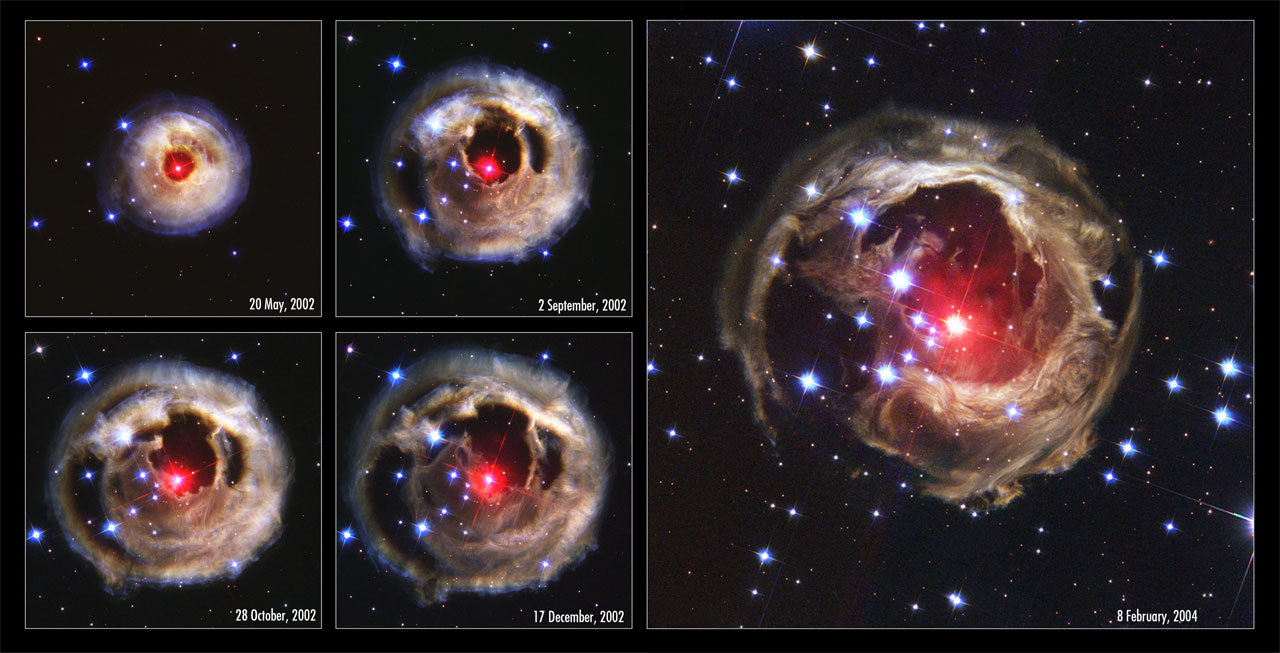
This one I find pretty amazing, it looks even better when you take a
very high resolution. Almost spooky SciFi like. For the story see here.
Probably the most beatyfull one is this recent picture from hubble:

Wonderfull. A ship, an insect, something flying, and all that of free upcoming stars (suns), but very far away...
And did you know that the latest lander on Titan (Saturns big moon) had
microphones on board which recorded sounds from passing through the
space dust of the rings of saturn, and also of coming into the
atmosphere of Titan?
Being deleted ?
Nah. But some things were, so I put them back on line. On the general ( I think first) c2.com wiki, I added my opinion to a page on holland (the country I was unfortunately born in, at least unfortunately since when the '70s were about through) where this piece
was deleted. By some dutch guy I guess.. Well, soime other things were
still in place after a long time, like a discussion on the supposed mistakes of Roger Penrose .
Of course, there was the tcl wiki incident, which I'm hasn't made the
deleter more popular, but then again I have more than a few pages on
there, which are doing fine, and the idea of editable pages is
definately interesting, historically and I'm sure sociologically,
humanly, and lately there have been (I'm sure also because of my
influence) some pages and mentions of the subjects of 'politics' on the
general wiki, and even the more dreaded still subject of
religion! Something new after 3 centuries of constitutional
democracies in the western world.
Recent continued work in electronics
Well, some things are made already, some are in caseless prototype
phase, others in setup, and a lot of chips I have are only in the
thinking design stage.

The above speaker is in evalutation test setup only on a singe front
board. Its a fairly large woofer, impossibly large for normal HiFi
equipment, namely 15 inch, about 38 cm, even more than a bit larger
than my already large high quality prototype speakers which have 12"
woofers. This one is supposed to be able to handle 500Watts maximum,
and contrairy to popular desk top multimedia speakers which also boast
such properties (ha ha) I'm sure it would shift quite some air when
that amount of power is fed to it. Currently I drive it from a car
booster (1000W maximum, but I doubt that
a bit) of fair quality (I've tried it out with various other speakers
and it specs are decent) in bridge, with a 80 Herz low pass filter
(12dB/oct) as electronic seperation filter.
The car booster is fed by a computer supply (12 Volt side) rated at
what is it 100 Watts or so, or else it simply limits the current
(voltage collapses). When fed from heavy supply (like a spare car
battery in good state) at least the bridge setup should give about 2 x
125 Watts is over 200 Watts of RMS power to this beasty, so that could
be fun to try.
However, currently it acts as a fairly 'decent' (well...) sub woofer. A real sub-woofer,
that is, because my normal test setup contains speakers which already
are measured up to the lowest frequencies with speaker sized, power
handling and enclosure sizes far better then most so-called subwoofer
toys in lets say the multi media area. Lets say, when I feed 25 Herz to
my regular speaker prototypes over my high quality amplifier (see my Audio Page
) and mixer from my self made USB high quality (really) DA converter,
those cones move over significant throw distance at such
frequencies, and can be felt, and that without significant higher harmonics to make the whole process seem a whole lot more heavy and more fashionable...
Anyhow this sub woofer is supposed to add the extra 'kick in the
mid-air' low frequency sound waves to the audio picture, supposedly up
to 20Herz (according to specs) which is the lowest one might ever want,
normally. And indeed it does, it also acts a a sort of lowest-low
loudness control: at not too high listening levels, the effect of the
ear being less sensitive to low frequencies is compensated for. And
that sounds pleasing, in fact a 'live' PA setup sound can be
constructed easily, but then without the usually abundant distortion.
The fun of course being to check out all kinds of recordings and their
more or less subtle recorded effects of such kind.
I'm not at all done with it, and am quite aware that the very finite
baffle (the lenght of the path between front and back side of the
speaker) is far from optimal, but the idea is that by adding this large
15"-er to the already (for HiFi use) large double 12"-ers shifts more
air when needed in the frequency range where directionality is really
limited, and that principle works good.
Except... Well. Ueehhm.. Lets see.... Lets put it this way: the found
computer supply feed up to a hundred watts, and eurh, ehhh, compared to
the 2x100W RMS true continuous output power of my high quality amp (and
its over 500 Watts music power) the subwoofer gives up just when things
are getting really good! But that's like really pretty loud for normal
use levels, yep its it. But still....
The next picture is from various parts, not really connected at the
time of the picture, from left to right a little circuit board with a
small round battery, a control knob and a very small 433 MHz data
transmitter (the little green part) then on the white breadboard the
uC7020 from Analog Devices on a green stamp board with extender to
connect it with the breadboard, a 2x16 character alphanumerical LCD
display, and a small data reciever with antenna wire sticking up.

Meanwhile, the 7020 microcontroller, with a 45MHz Arm Risc processor,
62kB of flash and 8kB ram and a number of 12 bit AD and DA convertors
on board (up to 1MSPS) has found a more fixed destination for the
moment:
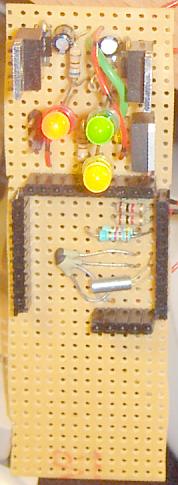
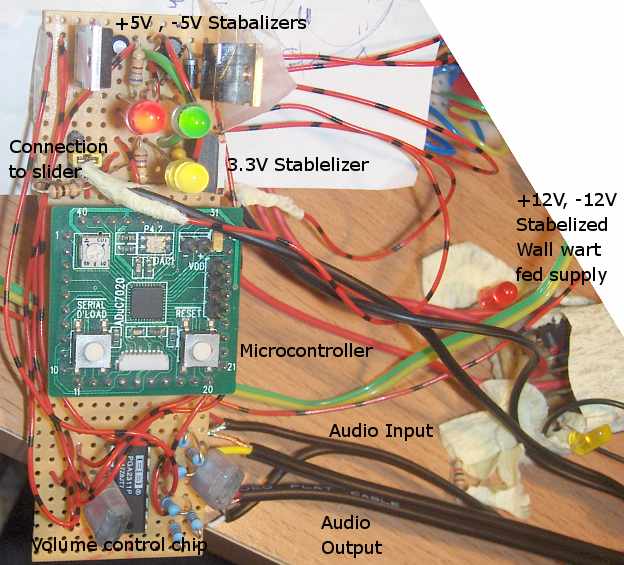
At the left, a constructed socket for almost all of the 40
microcontroller stamp board pins with on top 3 stablelizer chips and
capacitors and lights per supply voltage and under the board some IO
resistors (for safety and for level changing) are tucked away, as well
as the crystal and capacitors for the microcontroler clock, which can
be made into a stable real time clock this way.
On the right the little but important and powerfull board has been
completed with wires, the actual stamp with microcontroller, and a Burr
Brows/ Texas Instruments PGA 2311 A grade volume control chip.
That chip can control audio volumes (stereo) under computer control
with great accuracy, over a large range (over 120 dB) and with very
low distortion, for very high fi audio quality, lets say. As you may
have guessed, the microcontroller can control the volume in real time,
so the incoming audio signal can be send to the output audio wires with
its volume adjusted according to what the microcontroller wants.
Just above the microcontroller stamp board, the connection can be seen
which hooks up a single (mono) slider to the AD converter, which
meeasures the position of the slider through a voltage measurement. The
microcontroller filters out disturbance, and continuously sets the
volume by sending commands to the volume control chip over a 3 wire
serial interface and protocol. Result: the single slider controls the
stereo volume from a distance (it's got a long shielded wire on it).
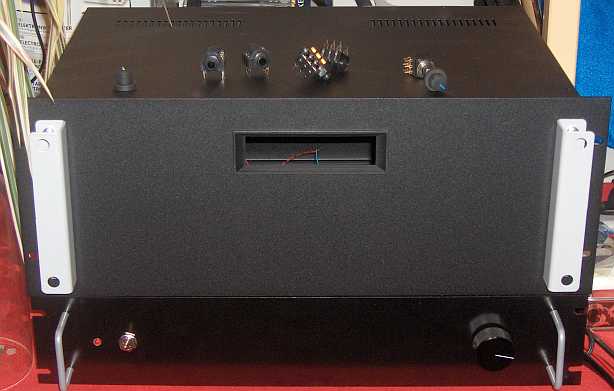
Well, this is another part of the audio projects: a big 19" enclosure
waiting to get a purpose. And it will, of course, get its purpose,
waiting on top of the fully functional and road and live tested (it was
used in a DJ setup and live sound reinforcement and practice room, and
survived road trips up til france and back several times, and above all
it has been on mostly 24/7 for years now....)
So what about the new enclosure? Well, I've to begin with done a hard
enough job without professional tools on it: made a neat display
'window' for it, right in the middle of the front place made of 3 MM
thick aluminium, which looks perfectly neat. There's a red glass for it
which is now absent, and I need to look into the exact display
arrangement I'll use, but I've experimented with 5x7 red LED dot matrix
displays, which work on a xilinx connected to a blackfin DSP, and the
window would fit a reasonanble 8 of them, which are then readable from
large distance, are very clear, and have no delay or looking angle
problems at all.
Atop the case are isolated 1/4 inch stereo jack chassis parts and
potmeter and various knobs, ready to be given a location on the front
pannel.
Finally a picture from the latest AES-netherlands lecture I visited, right in Delft, at the university where I graduated and worked for years:
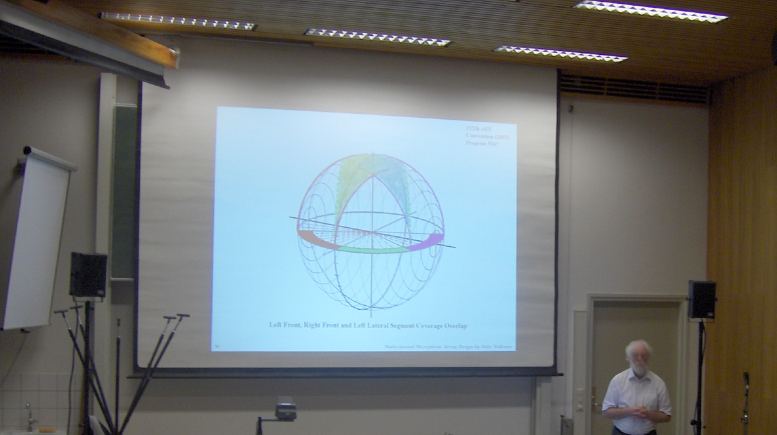
It was about recording sound with multiple microphones, and the 3D image is about which sound directions can be covered in certain microphone/speaker constellations.
The Hague: a demonstration
I was in the Hague for various purposes recently and I took this picture about 'actuallity' (is that a dutchism ?):

A demonstration for the 'constitutionalist party of Iraq' in near the
gouvernment buildings. The image is not processed (except for a little
contrast adjustment and sharpening), its actual scenery.
Oh, and I found out that to-be-baked kroepoek kanpoeng can be eaten unbaked, too, but it tastes a lot better when baked ....
Crazy motherf*s ?
Which second world war movie was it again which used the above
terminology ? Guns of navarone? I don't remember, but I'm sure it, and
many other bad expressions are apt to describe various kinds of
europeans, like someone who would put this on the door:

dreadfull.
Mother mary and her little antichrists and hitler ready to rule, I mean
seriously how dreadfull can things get. Mousolini, maybe? The head from
the next bush-nigger vilagein the hart of uncivilized africa maybe ?
Horrible ideas.
From the publication board of the Electrical Engineering building from
Delft University this more comical but of course also non-positive idea:

Its a parody on a fictive writer called 'loesje' which makes all kinds
of witty socially tinted jokes already for decades on similar posters,
saying: "And ministers (of education) which take longer than 4 years to
improve the education system, should pay back their salaries" talking
about the reduced study time and the loans which are part of
gouvernment study grants.
Disco ?!
So Theo is into disco music now? Well, ehr, I listened and danced to it
already decades ago, of course, but 'into', hmm, lets say some of it is
pretty nice and decent, and at least it is comparatively speaking
heavenly when compared to the modern house crap people are being fed
with.
And I, too, of course, not even as young intellectual, but still, I too
sort of dreaded the whole music kind in the time when there was still a
lot more actual good music around in hit parades and radio shows, lets
say the end of the seventies/beginning eighties like everthing from
Chicago through Donna Summer, and 10cc through Earth wind and fire.
Enfin: the good stuff. As opposed to the MTV one day flies (in the
beginning of that station often quite bearable) every rapper/house boy
which didn't top off Sugerhill gang and/or Kraftwerk (which is none
anyhow!) and what nowadays has the nerve to call itself R&B. Gimme
motown, and quick please, I'll trade anytime...
The guys 'n girls don't need 24 bits AD/DA converters, they need a steamcourse guitar and pop-singing, and they need it bad.
Not even to mention the blues. Ever listen to the Rolling Stones, boys? Start with that.
And that is of course why the gods (No capital G, no idols) of modern
music development, a term at a lethal angle with something that would
even consider calling itself something as dreadfull as 'hip hop' , like
Mike Stern and other advanced Jazz/Fusion acts have to rot away in
second rate performance spaces and why the pulled right from the clay
boys and girls from the Idols scene don't even get to decently listen
to what would be required at the very least already almost 50 years ago
by now: the Beatles.
Or the Who. Or chuck berry. Or Bill Haley. Or, for the bit younger ones maybe: Deep Purple. Or Pink Floyd. Or Queen.
Anything but all that crap that tries to be music and popular and
'great' that much that not even a black fellow human being from a very
backward neighbourhood (so to speak) would like to call music and be
proud of.
Learn some chords (lets say 3 to begin with ) from the Beatles, and start with that. That's worth it.
Anyhow from the time that saturday night feever was just bearable, and
grease was on the other side of the boundary, a good Diana Ross song
would certainly lift my spirit and make me dance enough. The tower of
power might be more capable, its interesting music, and very worth
listening to. Lets say like Cook and the gang, and outside of disco of
course but useable for similar purposes:
And finally (unless thoughts pop in my head) from what probable is disco area: snap your fingers with Rose Royce, and find out why Love Doesn't Live here Anymore. THAT is good music, almost unbeatable. Good recordings, too, if you take into account the playing with all kinds of things.
Recently I was browsing through the latest AOL music archive with videos of a lot of artist for free viewing in reasonable quality (about 500kbps streams), where for instance Fleetwood Mac
(probably most prominently influenced by Stevie Nicks) videos are
worth a view for people who've rarely seen good music on MTV or what
there is. Check out AC/DC too, of course.
I also enjoyed myself playing along with the Dave Brubeck video.of him at the grand piano doing interesting music with dimished chords and such.
I recently downloaded a song called "The Thrill is Gone" by B.B.
King with Pat Metheny and Dave Brubeck which I used to have on a 'Best
of Blues' CD long ago from cdnow
as a free mpeg download, which is cool (you just need to become a
member for free). When I was intensively practicing the Blues for a
year or so in my student room (I'd just been able to by a decent
digital piano, see my equipment description in diary page ) , and
thought of this song (without knowing about the other names bisides BB
King) as good practicing material for high level blues performance. I
was right, of course...
Anyhow, I found these articles from the Januari 30 Observer:
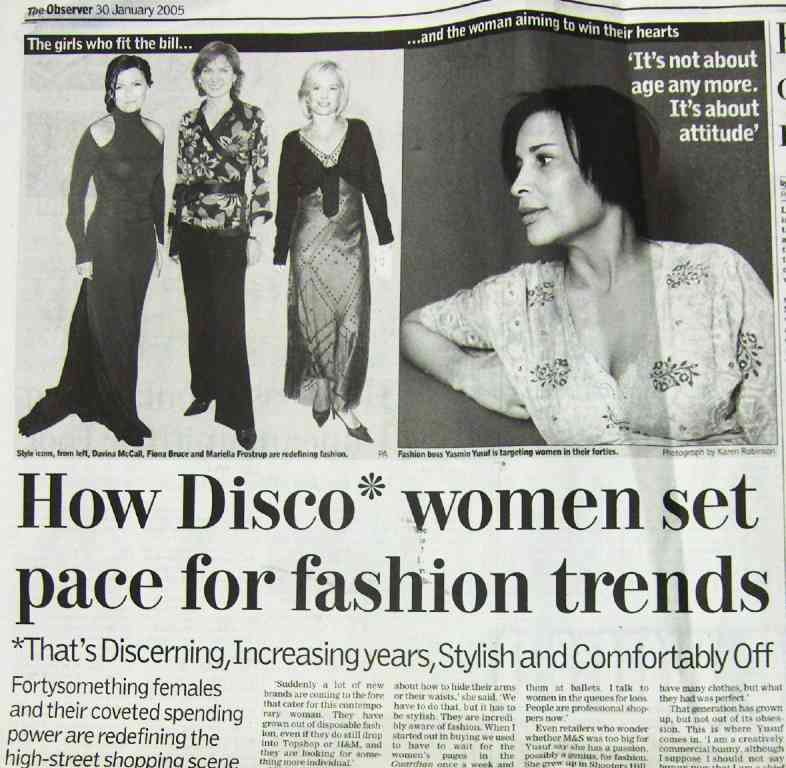
Well its the thought that counts.

Wasn't that amoung the normal progressive targets in the 60's and 70's already ?!
The Story of The Neuron

Some time ago, I saw a poster at the PC Hoofthuis of amsterdam
univeristy (the language library) where a relatively new cinema
facility organized an 'Open Curtain' for self made video (or other)
movies to be shown, a night long.
I thought that was a good idea, and so I started to record and edit
some things about a subject I've been self motivated working on since
when I worked on my Graphics Project at university, and a bit later on,
mainly in the library.
I went to a big academic hospital library, where in the cellar they
have boots where I took some books and recent magazines and a handycam
and recorded some footage, and also I went to Delft university library
for some recordings and book pictures. Then I searched the web for
various subject I knew about, and made screen capture based video
recordings of various intersting web page applets about neuron and cell
processes.
Also I recorded some other webcasts like from NASA (which are free to
use according to the main web page) from the space shuttle, and the
second chamber of the dutch gouvernment, and of course some general
video recordings I have acces to and made myself.
I had the purpose ofmaking it to the deadline of the open curtain
evening, but didn't make it, asked for prolongation and got it, but I
failed tomake the deadline again because I wanted to do a good job and
put a lot of material in the allowed 10 minutes. finally I had planned
to drive to France, and had to mail the just finished result right
before that, but it was too late, I found out later.
I also mailed it to the dutch VPRO broadcast corporation where they have recently started an internet documentary channel,
which at 800kbps is close enough to normal television, and they found
it interesting, though the commentairy was too soft at points (I knew
that) and they though the CNN fragment would be very expensive to
broadcast.... I'll see what I'll do.
Anyhow, I can luckily spread this video over internet, even though it's
big in original windows media format (or in mpeg), little under 100
Mega Bytes. But with the local server doing about 700kbps, a single
download can be done at the highest quality in about 20 minutes if you
have enough download capacity, so that's doable. Check out this page,
where there is also a 256kbps real time streamable version:
Theo Verelst Film Page
I made it with windows movie maker, in fact the XP SP2 supplied one,
which is a crime, really, it even crashes regulalry, but at least its
there and it can be used and has some possibilities, so I used it.
How much Asimov can you stand on an empty stomach ?
In my early teens, I guess since I was 11 easily and for more than a
few years I was a quick and interested Science Fiction reader. I
learned english through TV shows and movies, and science fiction, I
guess. I honestly admit that after I 'swore off' the reading of such
literature, and the 2 decades or so that passed since, I've forgotten
the plots and names of most all of those books, and there must have
been a hundred or hundreds of them, I was a frequent library visitor
and I read very quick at the time.
And really, except for inter gallactic dust gathering warp drives,
subspace communication at speeds faster then light, and the obvious
pressurized other-world housings, I don't remember much of even the
well known writers, but I liked reading the stories at the time, mostly
as adventures, I wasn't at all much into all the colored world
descriptions, I was sure that stuff sucked, so it was about good
stories, with good technological plots.
I'll maybe visit the old libraries I went to (there were two or three I
went to for variation and a bigger number of loans...) to picture the
list of those books, there were shelves full of them both yought and
adult, and I read quite a few of those books, apart from electronics
and other hobbies.
On the web I found for instance this asimov story: "The Last Question"
by Asimov. I don't know how many (legal) webbooks there are in the
genre, of a interesting kind I mean, not the motherf* crap that some
people want, for instance in strip form, which I really hate for its
ugliness, simplicity and stupidness.
Unfortunately, we on earth have to deal with the realities of 1984 for our daily lives to begin with, that's not too elevated.
Equipment I owned and used before things went wrong
I bought my first real synthesizer years after I'd built one myself
(which actually worked very well) in 1984, just before I went to
university, and it was such a one:
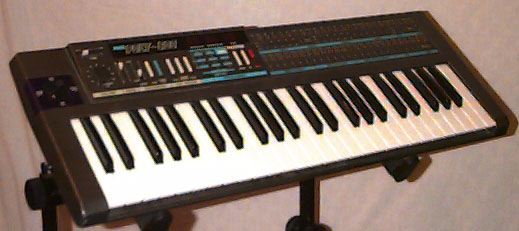
a Korg poly 800. At the time I had also a good cassette deck which may
have been the Phillips variation (of the same chassis and electronics)
of this kenwood 3 head machine:

with metal tapes and good bias adjustment setting, clean and
demagnetized heads and dobly B or C, this thing would copy any musical
source back over its playback head with virtually no difference, at
least at the equipment I tried at the time.
Before that, I had access to two sony tape decks and a lot lesser
quality Toyo cassette deck, the reel to reels were fun and usefull at
19 cm/sec tape speed, though a bit noisy still (no noise reduction
until I had built my own DBX for one) in spite of the high tape
magnetisability.
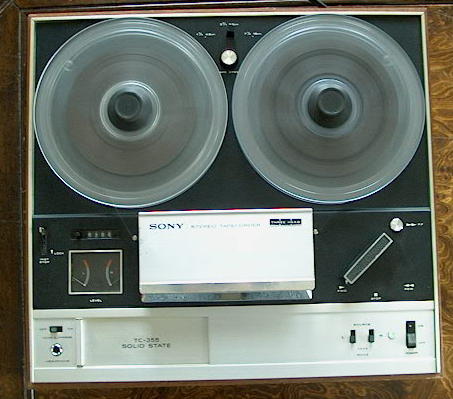
One looked more or less like this one, but not exactly, and that
appeared to be the better on in use, the other had two speakers as a
lid, which would make a lot of noise, and had acted as speakers years
before, when I hadn't built my own or bought the Jamo 504's I used
later yet:
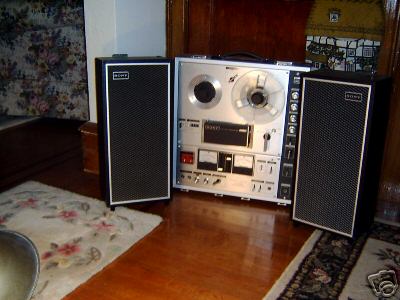
Also this picture is not exact, but it's an impression. Those tape
decks I used to ping-pong in stereo with, which was fun, but very
noisy. They could also record one of the stereo tracks and play the
other back.
Together with a early digital delay a Inanez DM500, that all was fun enough, though:

The cassette deck and the poly 800 were mine, the rest I could use.
After a little while, I was happy to be able to add a Teac/Tascam 244 multitrack recorder to the setup:
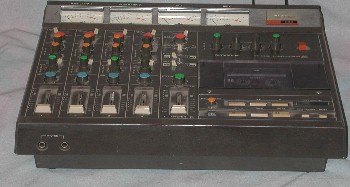

Which wasan incredible home recording device for the time: 4 tracks
independently recordable/playable, a good and well equiped mixer with
strong parametric equalizer per channel, aux send/receive, panning,
tape monitoring per channel and a solenoid controlled cassette
partusing Maxell XLII cassettes but at double the speed, and 4 tracks
at once. The DolbyX (much stronger even then dolby C, though not
perfect) gave it a CD player level of signal to noise range, which was
real cool for the time.
Of course I had a lot of stuff to use around this machine, I had bought
a fairly good mike (condenser), cables, I made a stereo spring reverb
unit mysilf of good quality (current drive and good quality opamps for
the time) in the house we got a realistic equalizer:

with for the time good specs, and a pretty steep quality Phillips amplifier (with low distortion) at some sale.
Well, and then it was all done? No sire, that's when I sort of got started...!
Of course I liked the poly 800 I had bought and the casio keyboard I
could use, but at the time, the DX-7 was famous, and I wanted more
lively sounds FM synthesiz could give, and better piano sounds it could
most certainly give, so at some point (I forgot when) I managed to have
worked for and obatin funds to buy a DX-7:
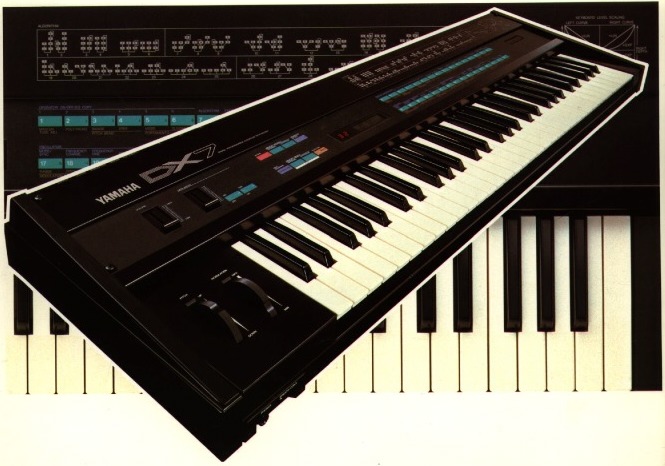
That was great, and I spent many hours and hours per day to learn to
use and program the machine, which is very hard (hardly anybody really
tried), I even became member of a club to buy and exchange sounds for
the synth, and after a while I had a set of some very good ones, and
even made my own extended memory banks for it. worked well, I've even
sold it to a 'friend' later on.
Meanwhile I'd also been somehow able to purchase a drum computer, a
known one, tighter sounding competition of the (still) well known
Roland tr707 (IIRC), the digital samples based Yamaha RX-15:
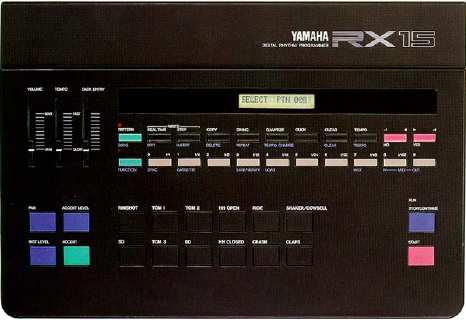
That's the one, it cost me about 800 dollars, and it looked nift and
decent. And sounded good, not exagerated, not 'american' much, but good.
When I for the sequencer (PRO24 at the time, later Cubase) had bought a
Atari ST computer (the 68000 based one which really worked and ran unix
stuff , too, with windows before windows 3.1 and 1 megabyte when
windows was still stuck with 640k) I really wanted an analog sound
back, preferably with touch senstive big keyboard, so I laid hands on a
Crumar Bit One:

Because I had traded back in my poly 800 when I bought the DX-7, but
this one was a worthy followup, a 5 voice real analog synth with
digital controls and a nice punchy sound, though not the thickest of
synths is was reasonably versatile and a nice contrasting sound palette
with the digital FM synth.
I don't recal how it happened exactly but a but later still I was also
the proud owner of a Yamaha REV-7 studio reverb and effects unit, for
the time professional level, just like the DX7 can still be seen on
many many band and artist recordings for television from lets say '83
to '87 or so:

'Friends' at the time though that this was probably the most good
looking machine of all, it had a lot of knobs buttons and leds, and it
also sounded very good for the time, even in this time it would be
usable.
At some point I had the idea I wanted to have the noise-freenes of the
rack version of teh latest DX synthesize, which also allowed the use of
different sounds simultaneously, the TX-802:

A machine I had a lot of fun and good music with, and which has also
been on stage several time, and was very strong within a PA sound.
To afford some of this, I had to hand in machines, and I had come up
with the idea that I could drive this rack unit by selling the DX7 and
the Bit One and having only one new keyboard, which luckily was a
strong enough analog sounding Korg DW8000:

A big gutsy synth and keyboard, which later go split options built in, with a good sound, though not up to prophets and such.
Living in a student room, I buoght a Roland digital piano on limited
sale at some point, which has been played more then 40,000 kilometers
per year, I guess... :
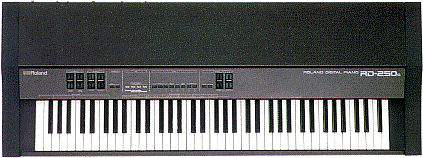
It was the home equivalent of the above one, which I played often at
the music centre. A strong, musical sound, though not the perfect
concert piano imitation, which however made it a instrument in its own
respect, very usefull for jazz/fusion pop and funk.
Later on, after I had sold the DW8000 for money, and wanted a synth
with modulation wheel and such back (which the piano didn't have), I
purchased a cheap kaway Spectra synth to drive my module with, which
worked ok, and had the advantage that the Kaway was easily portable
(small) and even could be strapped:

Yet it had 5 octave touch sensitive keyboard, which was fine.
The latest addition before some things were made to wrong was a TG500
sample rack synth from Yamaha, also a special offer from a music store
which at the time a often bought:

Many drum samples, all kinds of sound, together with the TX802 (DX
sound) and the piano and drum computer, and of course the reverb, that
setup was quite strong sounding, for instance with the sequencer.
And nowadays all that can be done with one machine ? And better! No,
not really. Some things indeed better, when it's a real good
synthesizer, but other things are hard to capture, like the DX sound,
and the soud variety from various pieces of equipment mized together (I
had various mixers).
What's in all these musical machines ?
Chips, my dear Watson! Electronic, digital and computer chips,
integrated electrical circuits on little pieces of purified and doted
silicon, of which all our beaches are full (except there's oxigene to)
and of which consists 1/4 or the elements on earth (!).
Is that interesting? Of course! Probably more interesting then most
anything of the last 50 years or so, and unique in history and the only
reason we can use a lot of technology and that we have CD players,
mobile phones and computers. I can't say space travel, that didn't
rqeuire chips, strictly speaking.
In I think the second year of EE, I and everybody else followed a
course called CACDI or something which was taught on the basis of the
exellent and still relevant book from the beginning of the '80s:
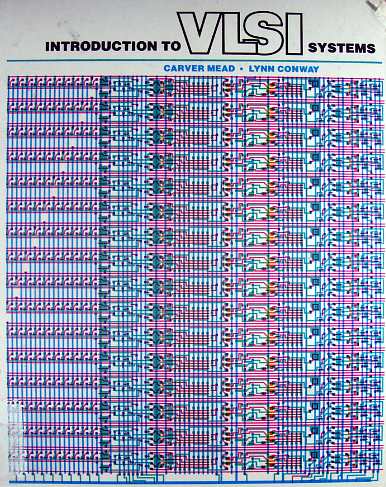
It's a well known book, still in use at american universities, and it
explains all aspects of early chips, their design and their use. Also
it has many chapters on advanced computing systems, which clearly
has been the direct inspiration of a lot of copied (done again)
research, but which already was written mainly in the (end of
the) '70s (!) at leadig universities.
A sample few pages from the first chapter (I guess lik eon amazon.com, that is OK):
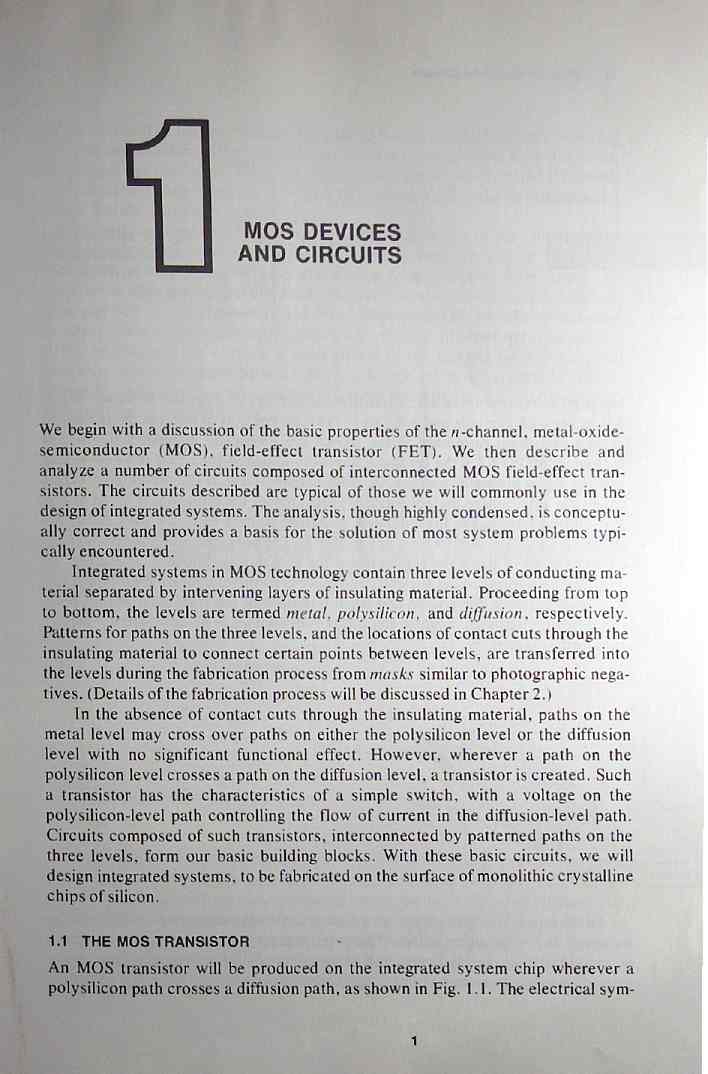
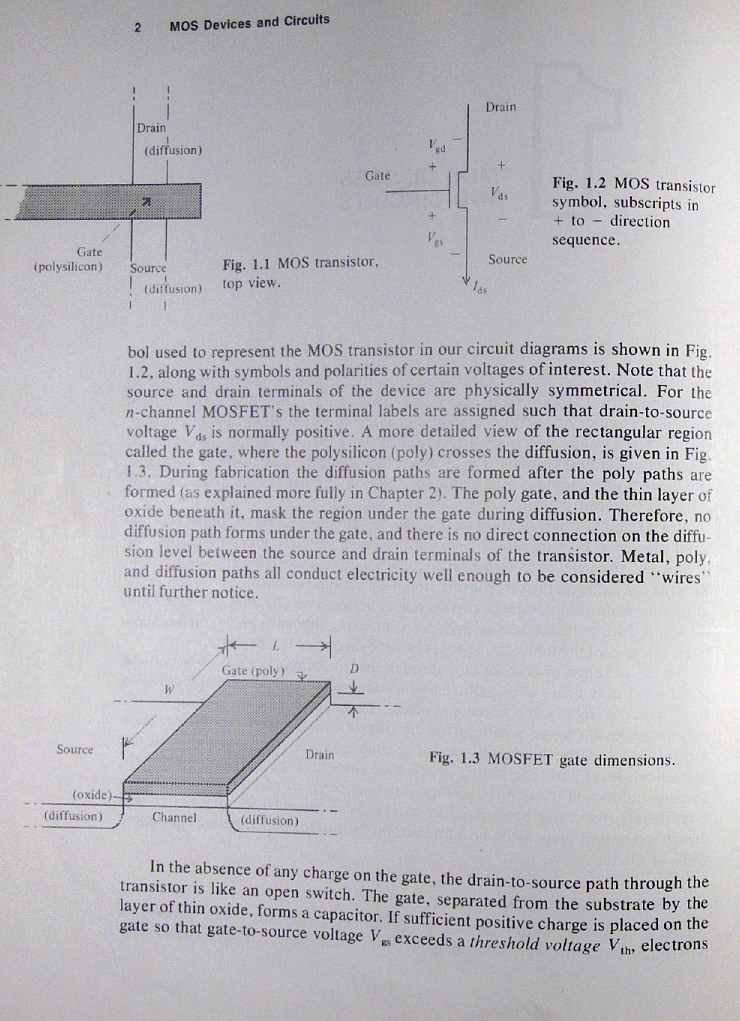
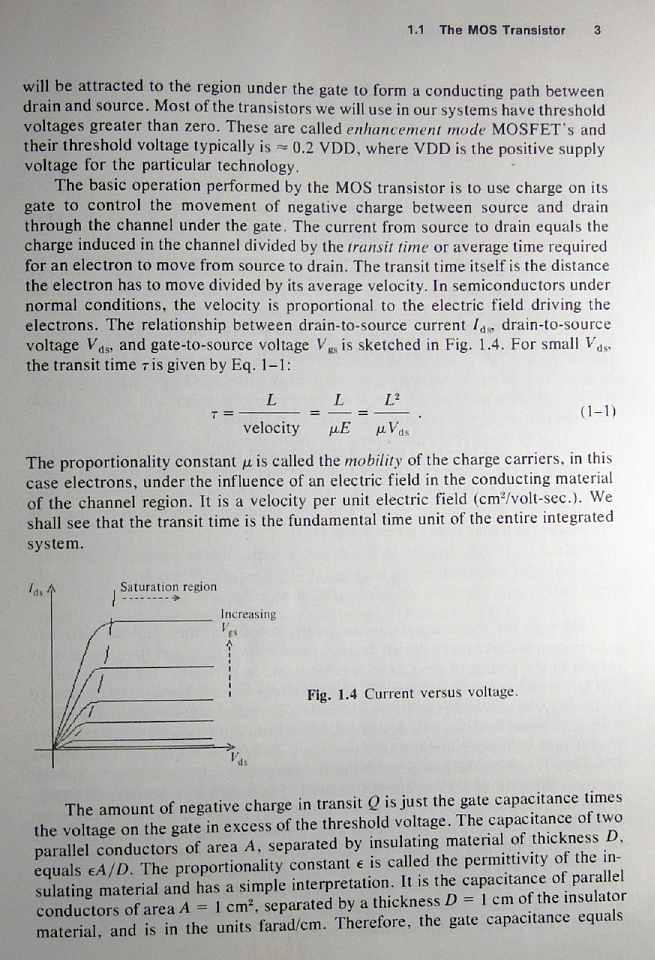
Not for the faint hearted, of course, this is for the most intelligent
and professional of all: the electrical engineers who can actually do
something, too. Top level.
It's interesting, after good writing and reading habit, and illustrative to look and the table of contents:
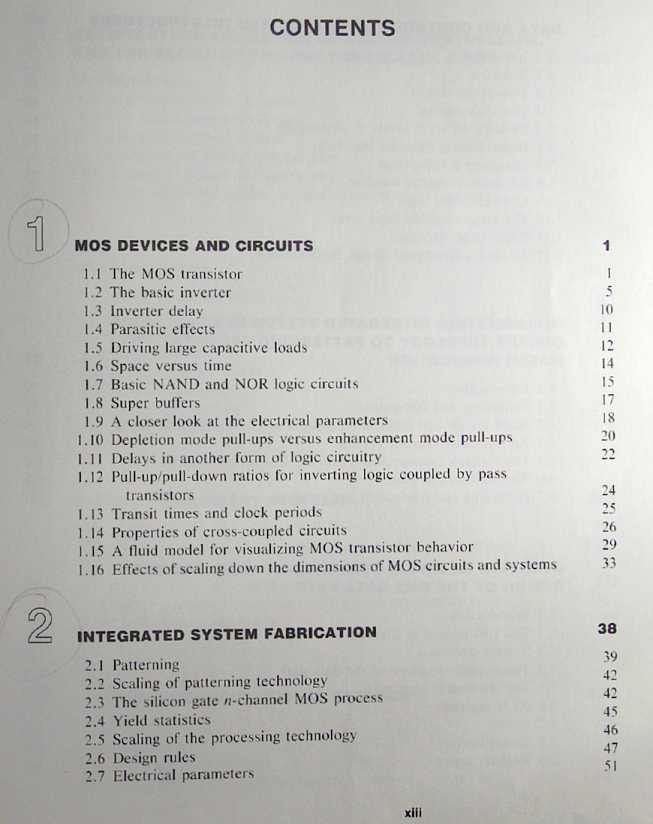
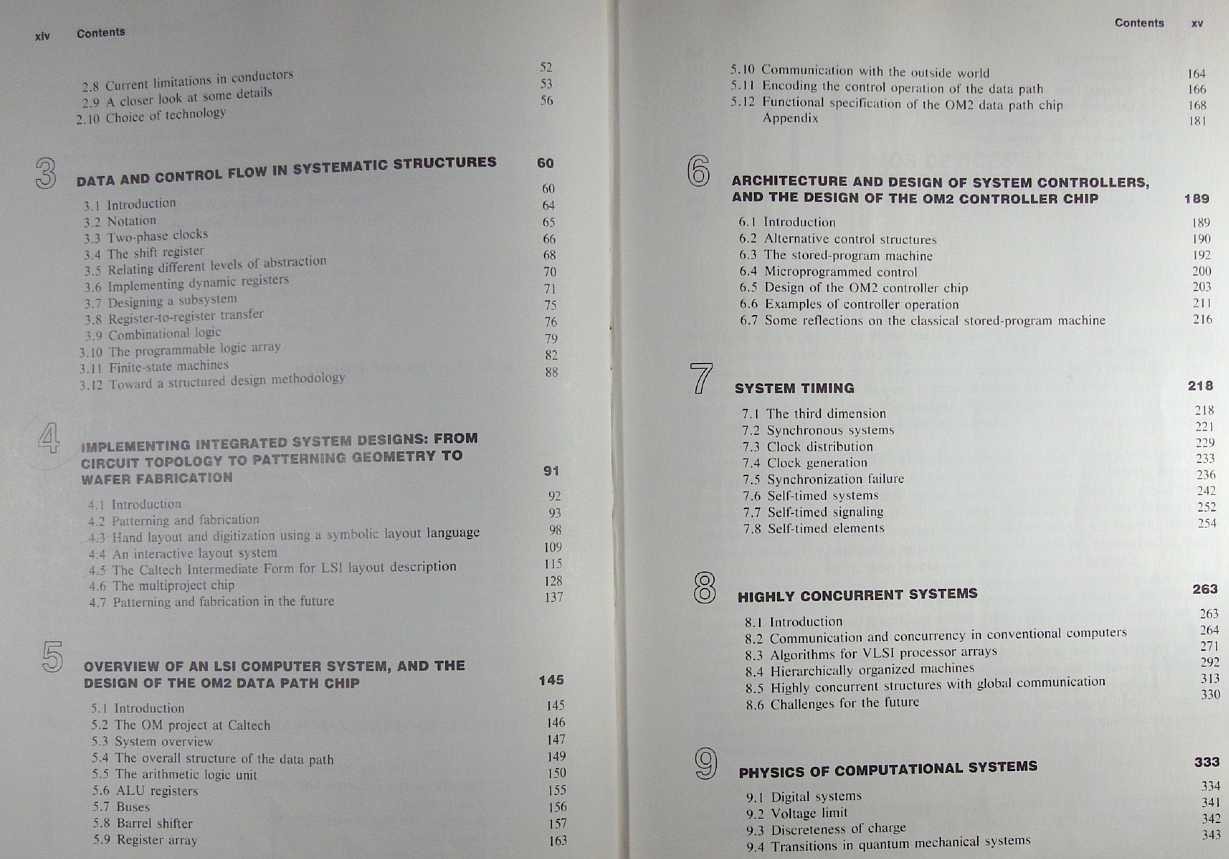
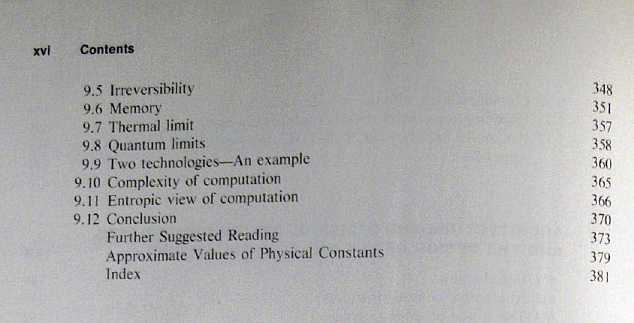
What am I reading ?
Well, many things of course, for instance on the internet in library magazines, but bookwise:
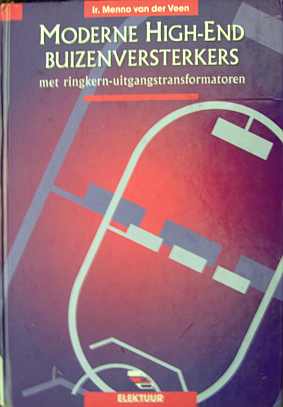
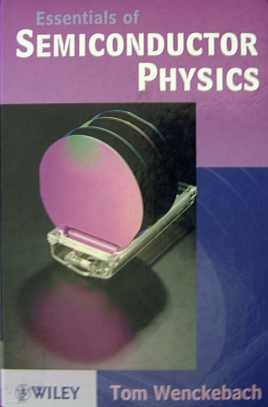
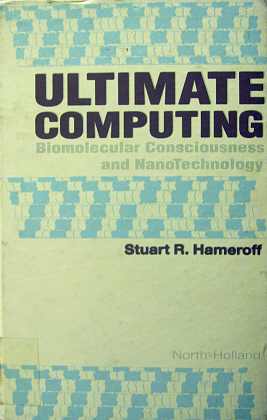
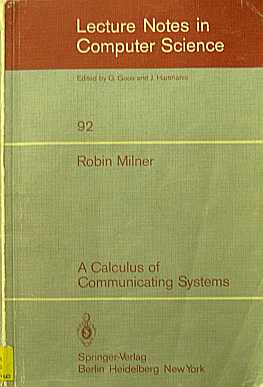
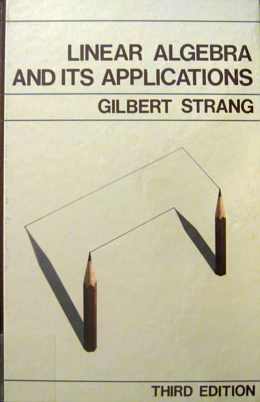
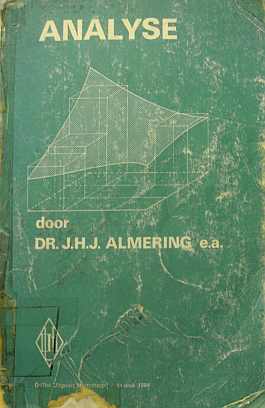
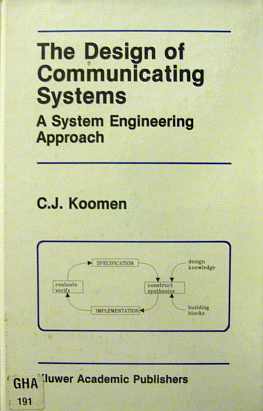
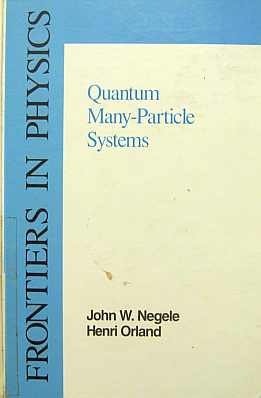
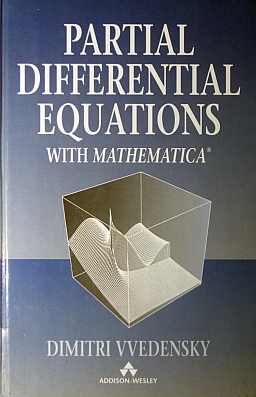
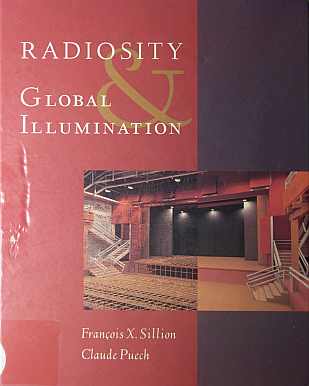
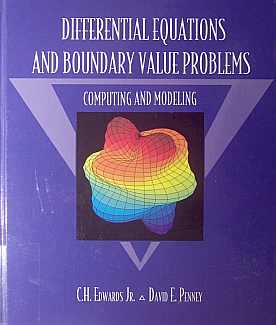
Book covers may be deceptive, and some may well recognize certain books
easily: they're from the normal curriculum of Delft University
Electrical Engineering courses, and for every other person very heavy,
I'm sure...
Some are normal public linrary books, which are good reading, and some
are advanced university books, like the Negele/Orland books on
theoretical (nuclear) physics.



















